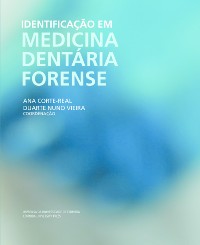Please use this identifier to cite or link to this item:
https://hdl.handle.net/10316.2/38477| Title: | Identificação por queiloscopia e palatoscopia | Authors: | Caldas, Inês Teixeira, Alexandra Pérez-Mongiovi, Daniel Afonso, Américo Magalhães, Teresa |
Keywords: | cheiloscopy;palatal rugae pattern;classification;queiloscopia;palatoscopia;classificação | Issue Date: | 2015 | Publisher: | Imprensa da Universidade de Coimbra | Journal: | http://hdl.handle.net/10316.2/36707 | Abstract: | The techniques described can be useful in different contexts. The cheiloscopy may be useful in identifying living individuals, and is often the only way to correlate an individual to a particular place or person; but the use of lip prints is still controversial and rare. Some authors suggest that there is insufficient evidence to conclude that the lip prints are unique for each individual. However, currently the singularity is not a required parameter for a feature be used in the identification process; it is sufficient that it is discriminative amongst individuals. Recent studies
on the detection of DNA in lip prints open new doors to cheiloscopy. In parallel, other studies that aim to relate the palatal rugae pattern with population affinity and gender of the individual are equally promising and an increasing use of this methodology is expected in the near future. Palatal rugae pattern, taking into account the anatomical location of the palatine wrinkles, it is not expected to be used in the correlation of the individuals. Instead, its usefulness in identification of dead bodies is recognized, either by the relative stability of the palatal zone, even in situations in which facial recognition is not
possible, or by the pro- bable existence of ante mortem data. Similarly to what happens in cheiloscopy, there are also being developed studies that correlate the population affinity and gender of the individuals with their palatal rugae formula. Therefore, a greater use of this technique is also expected. As técnicas descritas podem revelar-se úteis em diferentes contextos. A queiloscopia pode ser útil na identificação de indivíduos vivos, sendo muitas vezes a única forma de correlacionar um indivíduo a determinado local ou pessoa; porém, a utilização de impressões labiais é, ainda, controversa e rara. Alguns autores referem que ainda não existem provas suficientes que permitam concluir que as impressões labiais são únicas num indivíduo. Contudo, atualmente, a singularidade não constitui um parâmetro necessário para que uma característica possa ser utilizada no processo de identificação, sendo suficiente que seja discriminativa entre indivíduos. Estudos recentes relativos à deteção de ADN em impressões labiais abrem novas portas à queiloscopia. Em paralelo, outras investigações que visam relacionar os padrões queiloscópicos com a afinidade populacional e o género do indivíduo são igualmente prometedoras, sendo de esperar, num futuro próximo, uma crescente utilização desta metodologia. Na palatoscopia, tendo em consideração a localização anatómica das rugas palatinas, não é expectável a sua utilização na correlação de indivíduos a locais ou a pessoas. Pelo contrário, a sua utilidade na necroidentificação é reconhecida, quer pela relativa estabilidade da zona palatina, mesmo em situações em que o reconhecimento facial não é possível, quer pela provável existência de dados ante mortem. À semelhança do que acontece na queiloscopia, também a este nível se estão a desenvolver estudos que relacionam a afinidade populacional e o género do indivíduo com a sua fórmula palatoscópica, pelo que também aqui se espera uma maior utilização desta técnica. |
URI: | https://hdl.handle.net/10316.2/38477 | ISBN: | 978-989-26-0083-3 978-989-26-0963-8 (PDF) |
DOI: | 10.14195/978-989-26-0963-8_6 | Rights: | open access |
| Appears in Collections: | Identificação em Medicina Dentária Forense |
Files in This Item:
| File | Description | Size | Format | |
|---|---|---|---|---|
| identifica__o_por_queiloscopia_e_palatoscopia.pdf | 1.01 MB | Adobe PDF |  |
Items in DSpace are protected by copyright, with all rights reserved, unless otherwise indicated.
